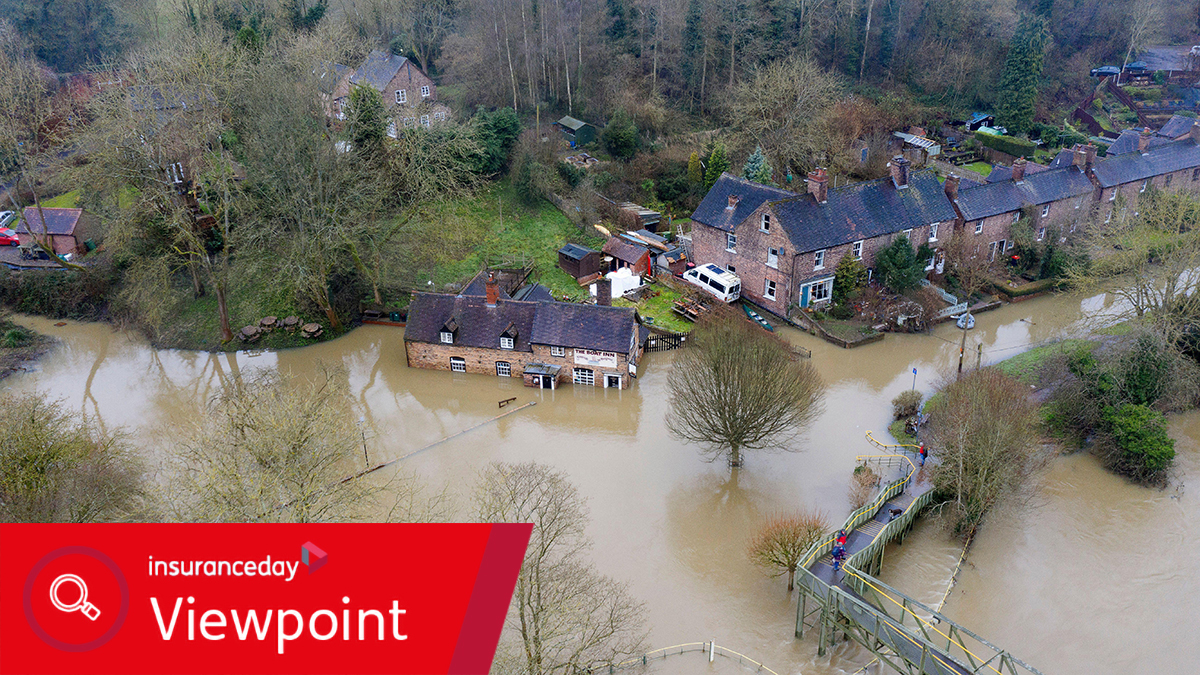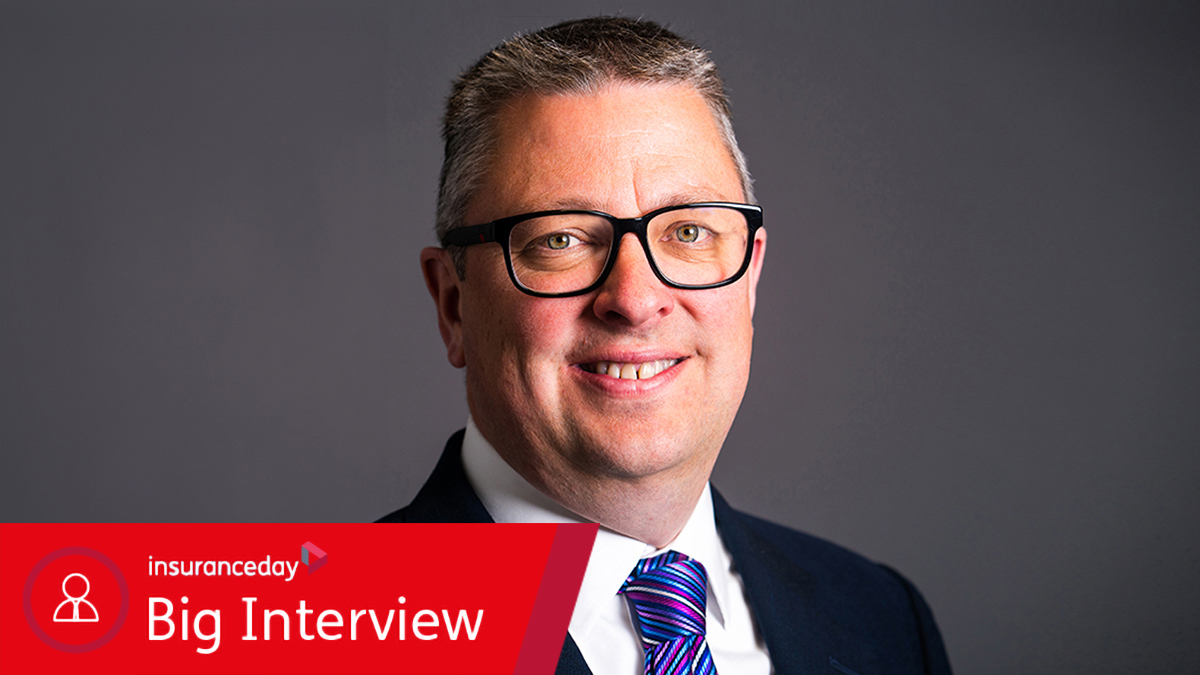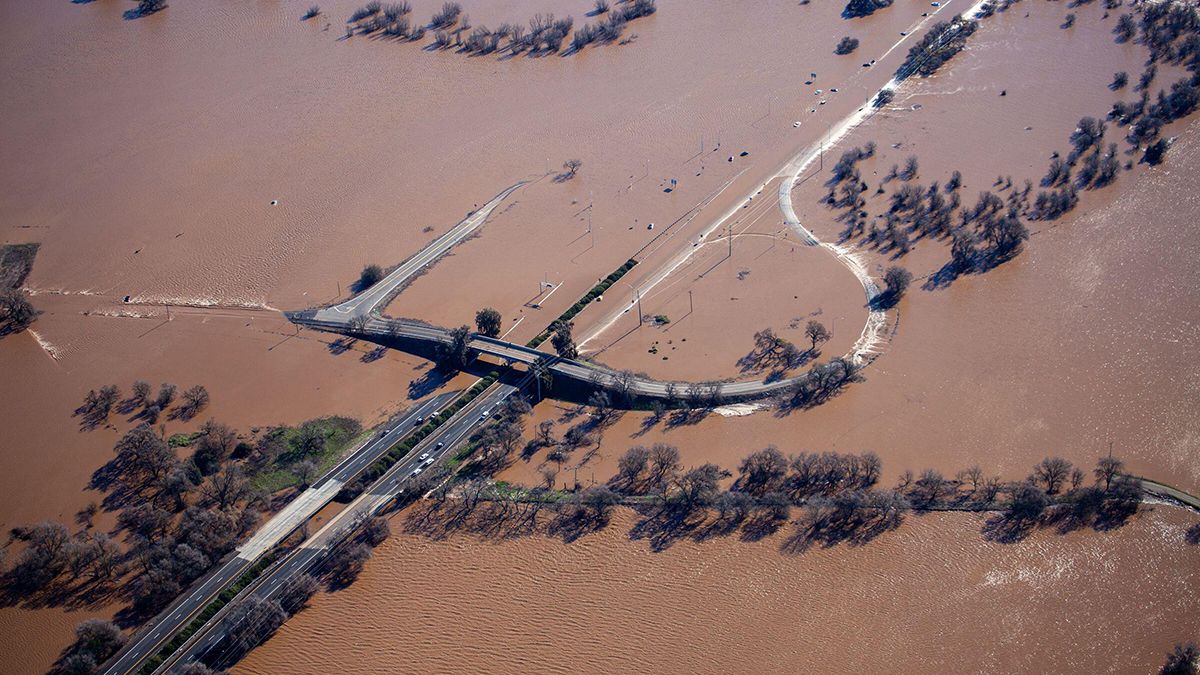FloodFlash sensors remove uncertainty from flood insurance: Bartholomew
‘A better understanding of floods has actually diminished the availability of flood insurance,’ managing general agent’s CUO, Ian Bartholomew, says
Parametric insurance specialist FloodFlash hopes to stem the tide of US insurers pulling out of natural catastrophe coverage
Improvements to the availability and quality of flood data have led to an unhelpful trend among re/insurers to penalise rather than support clients exposed to flood risk, according to FloodFlash chief underwriting officer (CUO), Ian Bartholomew.
Managing general agent (MGA) and Lloyd’s Lab graduate, FloodFlash specialises in flood risk modelling, pricing and data-based claims payouts for commercial flood insurance with its proprietary algorithms and Internet of Things (IoT) flood sensors.
“One of my concerns historically has been that insights about floods have been used by the industry for risk selection, meaning, ‘let’s exclude that, let’s set a higher deductible or lending limit’, rather than as an enabler for wider flood insurance,” Bartholomew says in an interview with Insurance Day.
“A better understanding of floods has actually diminished the availability of flood insurance, whereas our mission at FloodFlash is entirely the opposite,” he adds.
While at Moody’s RMS, Bartholomew and fellow senior consultant Adam Rimmer observed how the New York Metropolitan Transport Authority had found it difficult to renew its flood cover following Hurricane Sandy in 2012. They developed parametric cover that would pay out if water rose above a certain depth in the New York harbour.
That experience provided the spark for FloodFlash, which they co-founded five years later, with Bartholomew as CUO and Rimmer as chief executive, to develop a “different type of insurance”.
Indemnity insurance costs are greater than parametric insurance because of the need to pay loss adjusters, claims teams and lawyers, among others. Similarly, traditional insurers are more exposed to uncertainty when a flood occurs – they cannot predict the exact damage caused by a flood because of all the variables involved, and so their potential final bill is unknown. They manage that uncertainty by charging more premium or refusing to cover flood risk.
In contrast, FloodFlash agrees a set payout for when a flood occurs, with a pre-defined depth measured by the sensor that comes with every insurance policy. This means its premiums “can be significantly lower” than traditional insurance products, Bartholomew says.
Predicting events
FloodFlash also challenges the traditional view of probability to predict flood events.
Bartholomew explains: “The ‘one-in-100-year event’ is easy to say but isn’t such a useful way to communicate risk. Instead, risk modellers like me are now saying, ‘a 1% chance’.”
The likelihood of extreme rainfall increases as a function of climate change, since global warming traps more moisture in the atmosphere, and there has been an increase in powerful or unusual tropical storms.
“Hurricane Otto last year intensified more quickly than almost any other storm that has been measured and so extreme weather events are one of the most obvious and noticeable short-term impacts of climate change,” Bartholomew says.
“Flood is very much part of the family of extreme weather events, but there are other changes that interact with it. So, without climate change, there would still be a flood insurance problem and FloodFlash would still need to exist to solve it,” he adds.
"Flood is very much part of the family of extreme weather events, but there are other changes that interact with it. So, without climate change, there would still be a flood insurance problem and FloodFlash would still need to exist to solve it"
Ian Bartholomew
FloodFlash
Impetus for flood risk also comes from a growing population living in ever more flood-prone areas and changing catchments of the built environment.
“More concrete lets water flow into rivers more quickly, which means they peak faster and lead to bigger floods, so there are things humans are doing that are not related to climate change that will still increase flood risk,” Bartholomew says.
“On top of that is the increased likelihood of massive amounts of rainfall. The flood insurance problem would still exist without climate change, but climate change makes it worse.”
Naming perils
Redefining flood as a peril is also up for grabs, especially as this risk climbs up the agendas of insurers and policymakers.
The UK, for example, has experienced 10 named storms in the past five months. Just two more, and September 2023 to August 2024 will be a record storm year.
A naturally occurring inundation by water, such as river surface run-off, bursting dams or coastal surge, flood is described by reinsurers as a secondary peril.
“It doesn’t seem like a secondary peril though if it’s happening to you,” Bartholomew says.
In the UK, about one in six homes are at risk of flooding and up to 12% of the US population lives within “100-year” flood zones.
“That’s a significant minority of people and, at the insurance and reinsurance levels, I don’t think you can continue to think of flood for them as secondary.”
In 2016, Louisiana had $16bn of flood damage; in 2017, Texas had about $100bn; in 2019, the Midwest had $10bn; and, in 2023, California had $30bn.
 Flooding in California last year
ZUMA Press Inc/Alamy Stock Photo
Flooding in California last year
ZUMA Press Inc/Alamy Stock Photo
The term secondary peril is often applied to flood risk as a feature of another extreme weather event, such as hurricane, but that link is not clear cut.
Bartholomew explains: “Hurricane Sandy, which was the inspiration for our business, was not a particularly strong storm in terms of wind. In fact, I think when it made landfall, it wasn’t a hurricane anymore but there was a huge amount of storm surge, which is what caused most of the damage.
“Flood is somewhat storm dependent, and I can see why some people think they are inextricably entwined. You can historically find a lot of flood damage being paid out as part of wind policies, but I think it is less true of other sorts of flooding, such as the flash flooding in New York last year.”
Using models
As an MGA specialising in parametric insurance, FloodFlash uses models such as those produced by Moody’s RMS, which last year unveiled version 2 of its HD flood models that present an improved global digital terrain model as a foundational component of flood modelling.
“Terrain data is probably the biggest source of uncertainty and therefore the most important component of a flood risk model, because you rely on it to tell you where the water is going to go and the extent to which it can accumulate,” Bartholomew says.
Until quite recently, flood modellers relied on terrain data collected by satellite radar sensors, but are increasingly able to tap airborne sensors, using LiDAR (light detection and ranging).
“Having that data available is vastly improving the quality of the flood maps that we have access to,” Bartholomew says, “and computational power has reached a point where you can make use of that data. It’s why we’re seeing pretty rapid improvements in the quality of flood models.”
The UK and large parts of the US have “very good” flood data, he continues, but building a historical record is challenging because floods by their nature are ephemeral.
“They’re there and then they’re gone. If you’re using remote sensing satellite data, then you can capture the biggest floods, because they’re slow moving and visible from space, but to get to the fine detail, you need local measurements and it’s a hard task to build a database of those.”
Middle of the chain
As the creator of a flood insurance product, FloodFlash sits between customers and their retail brokers, and between insurance carriers and their brokers.
Bartholomew explains: “We fit in the middle of the chain but the key thing we do is produce and enable an insurance product. We’ve built this IoT technology, we price it using flood models and we have a platform that can execute the claims process.”
He describes FloodFlash’s IoT water-level sensor as its “super-efficient” loss adjustment department.
“The fastest we’ve paid a claim so far, between someone flooding and money in their bank, is just under four hours. That means people can recover more quickly and be more resilient.
“We’re championing the use of low-cost sensors to enable fast insurance payments. We’re pushing the application of national scale flood models to underwrite parametric flood policies wherever it is possible. And we’re using cloud platforms to effectively create a turnkey solution that partners can feed into,” Bartholomew says.
Protection gap
The need for local measurements to improve flood data means the protection gap for countries that do not have such technology is widening.
As much as 80% of the world’s catastrophic flood losses are not insured, which is a $58bn bill each year for governments, businesses and citizens, Bartholomew says.
FloodFlash sensors are “incredibly cheap”, he stresses, which means they can be installed at every single one of a customer’s locations “within the unit economics of an insurance policy”.
This low cost means FloodFlash will be looking to enter countries where insurance markets are less well developed, and thus play a part in closing the protection gap.
Bartholomew says: “One of the key advantages of a parametric product is measuring a risk when it is happening, whereas traditional insurance is about collecting a lot of data about building stock and the historical cost of repairing that.”
FloodFlash launched in the US in late 2022 and, in the short term, the company is focused on developing its product there for its clients and distribution partners. Its ultimate goal, Bartholomew says, is “to help everybody recover from floods”. He adds: “Currently, we’re working on individual projects, whether they are commercial or otherwise, in the rest of the world on an ad hoc basis.”
Useful policies
Public policy initiatives such as the US National Flood Insurance Program and the UK’s Flood Re are to be welcomed, Bartholomew says.
“We don’t compete with them, and we never set out to. They’re positive and useful, but we can’t rely on them to solve the problem for us. Flood Re, in particular, is not intended to be a permanent solution.
“We very much want to be part of the solution to the problem of how to get more flood insurance covered by the private market, and we think that parametric insurance is one of the ways to do that for flood, which is still really complex and variable at the local scale.”
FloodFlash recently announced its expansion to a further 10 US states. Delaware, Iowa, Missouri, New Jersey, New York, Oregon, South Carolina, Washington, Vermont and Massachusetts now have unrestricted access to the parametric product. They join Florida, Texas, California, Virginia and Louisiana.
FloodFlash is available across the US. However, minimum premiums do apply for risks outside of those 15 states. Thanks to demand, FloodFlash has reduced that minimum premium to $25,000, with the intention to make their sensor-based parametric approach available to more of the businesses and public entities that need it most.
“We have always been available in almost all the US states but we’ve expanded the scope of our delegated authority in the underwriting agreement we have with Hiscox and Munich Re,” Bartholomew says.
“To date, a lot of our policies have focused on individual sensors in individual locations, but more and more we are finding customers who have a network of locations, or a portfolio of locations, and we’re creating policies that really work for them,” he adds.
"The technology is cool, interesting and fun but insurance is still a people business. If you’re selling something new, the biggest challenge is communication to make sure that what we’re doing translates into solving a real-life problem for our distributors and customers"
Ian Bartholomew
FloodFlash
By offering a low-cost alternative to the traditional concepts of flood insurance as cover for buildings, contents and business interruption, Bartholomew hopes FloodFlash can help stem the tide of US insurers pulling out of natural catastrophe coverage.
The next 12 months is about product growth in the US and product development, and then making sure FloodFlash is working as well as it can with its distribution partners because parametric insurance is “still somewhat new”, Bartholomew says.
Part of that development is to broaden the scope of risk it can address beyond the more traditional concepts of buildings, contents, business interruption, he adds.
“We’re asking insurance brokers to take these new products and work out how to fit them into their clients’ risk management solutions.
“The technology is cool, interesting and fun but insurance is still a people business. If you’re selling something new, the biggest challenge is communication to make sure that what we’re doing translates into solving a real-life problem for our distributors and customers.”
Providing certainty
Is the flipside of parametric insurance that an early payout takes carriers by surprise?
“With a FloodFlash parametric insurance policy, you need to understand the likelihood of a flood, but with a traditional one, you need to understand not only the likelihood of a flood but also how that is going to impact the property, which massively increases the uncertainty an insurer has about what their costs are going to be. That is the issue we help resolve for insurers, by providing certainty.
“But parametric claims happen really quickly and that is a challenge for the insurance industry because they’re almost smacked in the face by it. It’s not like, ‘Oh, there’s been a big event and my claims are going to come in over the course of weeks or months, and then I’ll go through the loss adjustment, and maybe in one year or two years, I’ll have worked out what the whole cost is’. With parametric, you know within a week.”
He concludes: “At FloodFlash, we pull the plaster off quickly. That seems scary, but it’s one hell of a claims service.”




